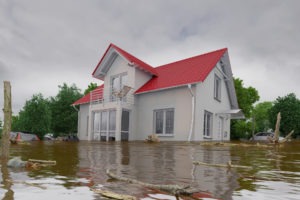 Every locale has different weather hazards that worry homeowners. Californians might stress about wildfires while Oklahomans worry about tornadoes, and Floridians are concerned about hurricanes.
Every locale has different weather hazards that worry homeowners. Californians might stress about wildfires while Oklahomans worry about tornadoes, and Floridians are concerned about hurricanes.
No matter where you are, though, there’s always a risk of flooding. While serious rainstorms can flood anywhere, an ill-prepared home can get water damage from minor rains as well.
The good news is that you don’t have to be a sitting duck. Check out these tips to learn how to protect your house from flooding.
1. Keep Up with Roof Maintenance
One of the biggest culprits of serious in-home flooding is the roof. It’s easy to miss roof damage and vulnerabilities if you aren’t looking for them, but you don’t want to wait until a defect forms and your bedroom becomes a waterfall.
Fix issues before they arise with regular roof inspections. It’s important to get a roof inspection at least once per year.
You should also get a roof inspection after any storm that may have damaged it. That includes tornadoes and hailstorms but also any storm with strong winds.
2. Build a Slope
Another major way water can get into your home is through the foundation. Sometimes it doesn’t even take major flooding. If rainwater pools next to your foundation, it can have the same effect.
To safeguard against this, create a slope in the ground that leads water away from your home. It doesn’t have to be a hill. Even a slope that lowers six inches every ten feet can get the job done.
3. Install a Sump Pump
If you don’t already have a sump pump, it’s a worthwhile purchase. This pump removes any water that tries to seep into your basement. It’s not a guarantee against basement flooding, but it’s a huge step in the right direction.
To some homeowners, a sump pump seems like an added expense. However, the cost won’t seem too overwhelming if you have to deal with basement water damage and its far-reaching effects for the first time.
4. Keep It Sealed
Another important way to keep your house safe from foundational flooding is to make sure your foundation stays sealed. The sealant can degrade over time, so keep a close eye out for dampness in your basement. If you notice any, it’s probably time to have the foundation re-sealed.
5. Steer Clear of Hazards to Your Roof
We already mentioned how important it is to keep your roof in good working order. To do that, though, you need to look beyond the roof itself.
Look around your yard or surrounding areas for anything that could damage your roof. Plant large trees far enough away that they won’t hit your roof if they fall. For any trees that are near your roof, keep the limbs trimmed.
The same goes for any recreational structures in your yard, like a wooden fort, a larger play set, or a tree-house. Inspect them often to make sure they’re stable enough to withstand the weather.
6. Keep Your Expensive Equipment Off the Ground
If you don’t want to shell out hundreds or thousands of dollars for flooding repairs, you have to think beyond your house itself. You have to think about your major assets and appliances as well.
Avoid storing your outdoor air conditioning unit on the ground. Build small structural stilts or put it on some other type of platform.
This applies to the appliances in your home as well. If you have a washer and dryer, refrigerator, or other appliances in your basement, put them on pedestals to protect them.
7. Invest In a Waterproof Safe
Sticking with our theme of minimizing flood damage, don’t forget about the irreplaceable items. Get a waterproof safe for those most crucial of items, like birth certificates, passports, social security cards, and treasured heirlooms. The items will be safe from floods as well as break-ins.
8. Consider Flood Alerts
More and more homeowners are protecting their properties with home security systems. However, not many know that some of these systems can go far beyond scaring burglars.
Some security systems can alert you about flooding in your home. The sooner you start your storm damage repair the easier it will be to fix, so alerts like these could save you money.
9. Install a Backflow Valve in Your Sewer Line
For the most part, flooding causes water damage throughout your home. As some homeowners have found out the hard way, though, it can cause a far smellier problem as well.
In some homes, flooding outside can cause their sewer lines to backflow, pushing the sewage into the home. To protect yourself against this, you should install a backflow valve in your sewage line. Your nose and your wallet will thank you.
10. Don’t Underestimate Flood Insurance
There are two key reasons homeowners don’t get flood insurance. First, many assume their homeowner’s insurance will cover floods. Most of these people don’t find out otherwise until they’re stuck on the hook for thousands in flood damage.
Another common reason is that homeowners think it’s an unnecessary added expense. It might seem that way at the time, but remember that it doesn’t always take a record-breaking downfall to cause extensive damage that’s beyond your bank account.
For most homeowners, flood insurance is a worthwhile protection to consider. It may also be more affordable than you think if you bundle it with your other insurance policies.
How to Protect Your House From Flooding
Water damage is one of the scariest things for homeowners to experience. The initial repair can be expensive, but if you don’t fix it right the first time…you may find yourself with mold. When your property encounters mold, you are looking at an even bigger headache and cost.
The key is preventing the damage as much as possible by using the tips above to protect your house from flooding.
If you’re dealing with water damage or you want help preventing it, reach out to our storm damage professionals. BMS CAT is trusted with the world’s biggest jobs, yours.
